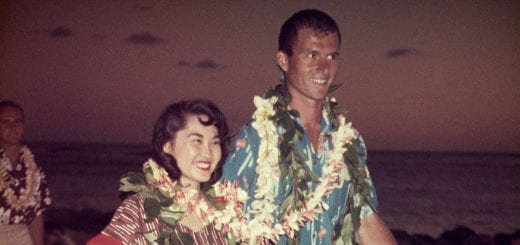Giving a Hoot

A partnership between SJSU and local Audubon Society combats climate change.
Three owl chicks hop and flap their wings around a mound of earth. They have brown speckled feathers and their soft warbles can barely be heard amidst the wind and rustling grasses that nearly disguise their petite frames. They look around, squat heads pivoting, eyes yolk-colored and piercing—and then one of the three flaps its wings harder and lifts off. It goes no farther than a few feet before plopping back onto the windswept brush and hopping down into a burrow. This interaction was captured on one of the motion-sensor cameras that monitor a 180-acre burrowing owl habitat near the San José-Santa Clara Wastewater Facility in Alviso. It isn’t easy to learn to fly, and the efforts of these young birds are particularly humbling considering how they came to be.
The burrowing owl is one of 314 birds at “serious risk” of significant declines or even extinction in this century, according to the Birds and Climate Change Report recently released by Audubon. This seminal study found that climate shifts are likely to dramatically alter North America’s bird population by forcing birds to adapt to new habitats with different temperatures if they are to survive. A native to the western prairie, burrowing owls have declined drastically in the Bay Area for the last 30 years. But Lynne Trulio, chair of the environmental studies department, and her former students are working to increase the numbers of these charismatic owls.
Since 2012, Trulio has partnered with the Santa Clara Valley Audubon Society (SCVAS) and the city of San José to enhance burrowing owl habitat on city lands, creating nesting habitat for the birds. The project came about after the San José-Clara Water Pollution Control Plant (now the San José-Santa Clara Regional Wastewater Facility) in Alviso wanted to develop hundreds of acres of open land around the plant. The SCVAS encouraged the city to enhance habitat and permanently protect areas for the owls. The city set aside 180 acres, and then hired Trulio and Philip Higgins, ’07 MS Environmental Studies, biologist for the city of Mountain View and one of Trulio’s former students, to craft an owl management plan. “We have research, a nonprofit advocacy group and the city all coming together,” says Trulio.
Two years and many tons of soil later, there are currently five pairs of owls nesting in the area. It is this sort of grassroots conservation that environmental organizations are rarely able to hatch. “This really is the confluence of the Santa Clara Valley Audubon Society pressuring the city of San José to do something for burrowing owls, and then the city allowing us to use our academic expertise to write and implement a plan,” explains Trulio.
Superhighways in the sky

Photo: Christina Olivas
Examples of such progress thrill David Yarnold, ’76 Mass Communications, president and CEO of the National Audubon Society. “When Audubon produced that groundbreaking science, we knew that our chapters would be the place where the work would be getting done. The work that San José State and Santa Clara Valley Audubon Society are doing fits perfectly into that roadmap. It’s exactly what we see happening across the country with Audubon chapters that help protect birds on beaches or in grasslands—it’s the chapters and our 22 offices that roll up their sleeves and go to work on the ground to protect burrowing owls and other birds.”
“Birds’ migratory routes are like four superhighways in the sky, and below them are their rest stops and homes. When you connect all these flyways and habitats, there’s a web of biodiversity, and it’s our job to protect that.”
This drive to promote birds and their habitat seems somewhat surprising for someone who got his start as a photojournalist and writer, but Yarnold has long applied his journalistic skills to work in unexpected ways. In 2010, when he was asked to take the helm of Audubon, his first challenge was to unite the 463 chapters and 800,000 members, while also infusing the 109-year-old nonprofit with 21st century appeal. He spent his first month on the job traveling around North America, talking to people about Audubon and how birds organize themselves. In the process, he told the New York Times, a story emerged: “Birds’ migratory routes are like four superhighways in the sky, and below them are their rest stops and homes. When you connect all these flyways and habitats, there’s a web of biodiversity, and it’s our job to protect that. I’m not a bird expert, but I’m skilled at figuring out a story. That vision became the basis of our new strategic plan.”
Yarnold, who is four years into his reinvention of the organization, has transitioned from Pulitzer Prize-winning journalist to environmental executive by combining Audubon’s conservation message with his experience as a professional communicator. “I think the first job of any conservation organization is communications. Engaging people means communicating effectively and harnessing their energy.” He writes regular op eds, blogs and tweets, and the Audubon strategic plan even has a page titled, “What we’ve stopped doing.” A lifelong advocate of the environment, Yarnold is determined to share the group’s message in a fresh manner. “I had the opportunity to tell the best story in the world. That was the rise of Silicon Valley—and I told that story as an editor, a photographer and a writer for 27 years.”
For the birds—and humans

Photo: Christina Olivas
In the 1980s there were hundreds of burrowing owls in the Bay Area, but as developers moved in, burrowing owls lost the natural prairie they require. Now, humans have to work to provide the habitat owls need. Other species are dependent upon it. “We have an obligation as stewards of the planet to protect all species and burrowing owls are native to our area,” says Trulio. “Burrowing owls that nest in Canada come to California for the winter, so our habitats here in California are essential to supporting other owl populations as well as our own.”
Warming temperatures also have the potential to affect humans. Clean water and air is the product of services provided by ecosystems. These ecosystems services are the result of interaction among species, notes Trulio. So while we may not notice a species going extinct over time, as we lose more species the earth’s natural resources will be compromised.
Standing just nine inches tall and weighing on average a quarter of a pound, burrowing owls may be easy to overlook. But local alliances such as the one between Lynne Trulio and the Santa Clara Valley Audubon Society are giving the owls a chance to flourish.
Learn more about the burrowing owl and listen to its song.
“Change doesn’t happen in big giant broad strokes all the time,” notes David Yarnold. “More often it happens at the local level.” Yarnold understands that climate change may seem like a distant, overwhelming issue, but with over half of North American birds threatened, the fate of these birds seems tied up with our own wellbeing. Yarnold asks, “What will Minnesota be without the loon or California without Allen’s Hummingbirds?” These fundamental questions are central to Yarnold’s transformation of Audubon. Clearly, the Bay Area isn’t ready to lose its burrowing owls. And while the delivery of this message might be different from Yarnold’s early years as a photojournalist, it still makes a good story.
Melissa Fraterrigo is a freelance writer and the author of the short story collection The Longest Pregnancy. She lives in West Lafayette, Indiana.




